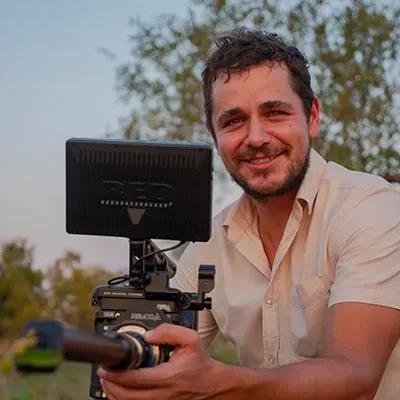By David Eastaugh, Wildlife Filmmaker, Too Wild
Behind the Lens: David Eastaugh and the Wild World of Wildlife Filmmaking with Too Wild
Ever wonder what goes on behind the scenes in the wild when no one is around? I’m talking about those moments when the animals are left to their own devices, and the only witnesses are the cameras. As a wildlife filmmaker, I’ve learned that the jungle, savanna, or ocean has a story to tell, but sometimes it takes a bit of clever technology—and a lot of patience—to capture it.
At Too Wild, we’re passionate about bringing these untold stories to life. But let’s face it: wildlife filmmaking isn’t as glamorous as it looks. Sure, it’s incredible to get up close with elephants or dive into the depths of the ocean, but nature isn’t always cooperative. Some of the most elusive creatures are ninjas at hiding, making it nearly impossible to catch them on camera—until we started using something a little more... stealthy.
Camera Traps
Enter the camera trap. While wildlife filmmakers are known for their ability to chase down the best footage, even we can’t be everywhere at once. Thanks to the ingenuity of camera traps, we’re able to capture those spontaneous moments that would otherwise slip away unnoticed. These little devices allow us to monitor wildlife activity without disturbing the animals or their natural behavior, and boy, do they deliver some wild surprises.
Take, for instance, a recent incident involving the notorious honey badger. We’d been dealing with an ongoing mystery at our camp—our kitchen was repeatedly ransacked, and no one could figure out how the fridge and freezer were emptied every morning. After installing camera traps, we discovered the culprit: a honey badger who somehow lifted a massive glass door clean off its hinges and hurled it to the ground to get inside. The footage was jaw-dropping. Case closed.
But the camera traps don’t just capture adorable (or in this case, mischievous) moments—they also help us gain invaluable insight into animal behavior. They show us how animals move, interact, and even get up to shenanigans when we’re not looking. The camera traps have been crucial in documenting everything from elusive predators to the occasional camera-snatching elephant or ground hornbill, whose antics often leave us with broken equipment and hilarious footage.
Harness the Power of Technology
At Too Wild, we believe in harnessing the power of technology to tell more authentic, compelling stories. Whether it’s capturing the elusive behavior of shy animals or simply getting a candid look at what happens when the humans aren’t around, camera traps are an indispensable part of our toolkit. And it’s not just about the footage—it’s about gaining a deeper understanding of the wild that we can share with the world.
Are you ready to dive into the wild world of wildlife filmmaking? If you’re passionate about conservation, storytelling, and the magic of nature, join us for an immersive wildlife filmmaking course. Get hands-on experience, expert guidance, and the tools you need to capture the untold stories of the animal kingdom. Visit https://toowild.co. to learn more and sign up today!

